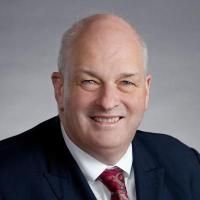Outcomes of Operative and Nonoperative Treatment for Adult Spinal Deformity: A Prospective, Multicenter, Propensity-Matched Cohort Assessment With Minimum 2-Year Follow-up.
Date
2016-06
Journal Title
Journal ISSN
Volume Title
Repository Usage Stats
views
downloads
Citation Stats
Attention Stats
Abstract
Background
High-quality studies that compare operative and nonoperative treatment for adult spinal deformity (ASD) are needed.Objective
To compare outcomes of operative and nonoperative treatment for ASD.Methods
This is a multicenter, prospective analysis of consecutive ASD patients opting for operative or nonoperative care. Inclusion criteria were age >18 years and ASD. Operative and nonoperative patients were propensity matched with the baseline Oswestry Disability Index, Scoliosis Research Society-22r, thoracolumbar/lumbar Cobb angle, pelvic incidence-to-lumbar lordosis mismatch (PI-LL), and leg pain score. Analyses were confined to patients with a minimum of 2 years of follow-up.Results
Two hundred eighty-six operative and 403 nonoperative patients met the criteria, with mean ages of 53 and 55 years, 2-year follow-up rates of 86% and 55%, and mean follow-up of 24.7 and 24.8 months, respectively. At baseline, operative patients had significantly worse health-related quality of life (HRQOL) based on all measures assessed (P < .001) and had worse deformity based on pelvic tilt, pelvic incidence-to-lumbar lordosis mismatch, and sagittal vertical axis (P ≤ .002). At the minimum 2-year follow-up, all HRQOL measures assessed significantly improved for operative patients (P < .001), but none improved significantly for nonoperative patients except for modest improvements in the Scoliosis Research Society-22r pain (P = .04) and satisfaction (P < .001) domains. On the basis of matched operative-nonoperative cohorts (97 in each group), operative patients had significantly better HRQOL at follow-up for all measures assessed (P < .001), except Short Form-36 mental component score (P = .06). At the minimum 2-year follow-up, 71.5% of operative patients had ≥1 complications.Conclusion
Operative treatment for ASD can provide significant improvement of HRQOL at a minimum 2-year follow-up. In contrast, nonoperative treatment on average maintains presenting levels of pain and disability.Abbreviations
ASD, adult spinal deformityHRQOL, health-related quality of lifeLL, lumbar lordosisMCID, minimal clinically important differenceNRS, numeric rating scaleODI, Oswestry Disability IndexPI, pelvic incidenceSF-36, Short Form-36SRS-22r, Scoliosis Research Society-22rSVA, sagittal vertical axis.Type
Department
Description
Provenance
Subjects
Citation
Permalink
Published Version (Please cite this version)
Publication Info
Smith, Justin S, Virginie Lafage, Christopher I Shaffrey, Frank Schwab, Renaud Lafage, Richard Hostin, Michael OʼBrien, Oheneba Boachie-Adjei, et al. (2016). Outcomes of Operative and Nonoperative Treatment for Adult Spinal Deformity: A Prospective, Multicenter, Propensity-Matched Cohort Assessment With Minimum 2-Year Follow-up. Neurosurgery, 78(6). pp. 851–861. 10.1227/neu.0000000000001116 Retrieved from https://hdl.handle.net/10161/28466.
This is constructed from limited available data and may be imprecise. To cite this article, please review & use the official citation provided by the journal.
Collections
Scholars@Duke

Christopher Ignatius Shaffrey
I have more than 25 years of experience treating patients of all ages with spinal disorders. I have had an interest in the management of spinal disorders since starting my medical education. I performed residencies in both orthopaedic surgery and neurosurgery to gain a comprehensive understanding of the entire range of spinal disorders. My goal has been to find innovative ways to manage the range of spinal conditions, straightforward to complex. I have a focus on managing patients with complex spinal disorders. My patient evaluation and management philosophy is to provide engaged, compassionate care that focuses on providing the simplest and least aggressive treatment option for a particular condition. In many cases, non-operative treatment options exist to improve a patient’s symptoms. I have been actively engaged in clinical research to find the best ways to manage spinal disorders in order to achieve better results with fewer complications.
Unless otherwise indicated, scholarly articles published by Duke faculty members are made available here with a CC-BY-NC (Creative Commons Attribution Non-Commercial) license, as enabled by the Duke Open Access Policy. If you wish to use the materials in ways not already permitted under CC-BY-NC, please consult the copyright owner. Other materials are made available here through the author’s grant of a non-exclusive license to make their work openly accessible.
